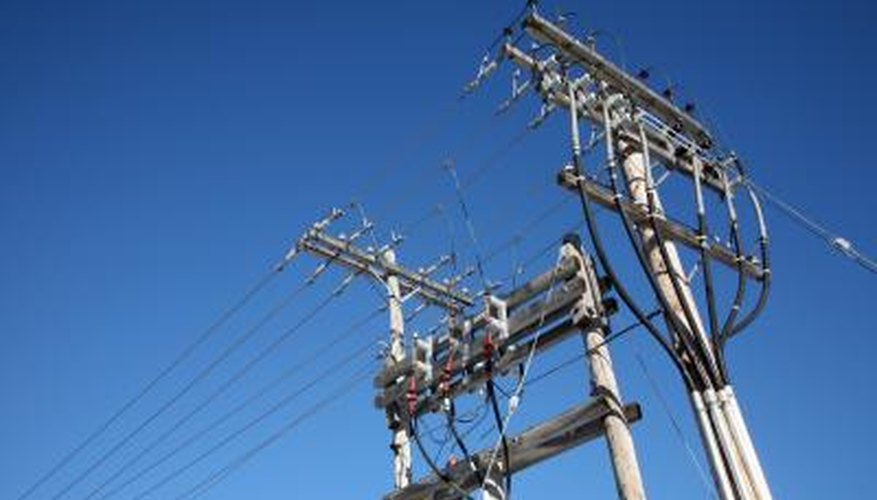Electric utilities generate three-phase electric current for transmission across the electric grid to supply homes, businesses and industry with electric power. Most residential homes and small businesses use only single-phase power, but factories often use three-phase power for large motors and other purposes. Transformers that supply three-phase power have two different wiring methods, called delta and star. Slight differences in the voltage exist, depending on the wiring method. Checking three-phase voltage is fairly simple and straightforward.
- Electric utilities generate three-phase electric current for transmission across the electric grid to supply homes, businesses and industry with electric power.
- Transformers that supply three-phase power have two different wiring methods, called delta and star.
Move the motor's disconnect switch to the "Off" position. Remove the screws holding the cover on the disconnect switch and take the cover off.
Set the digital multimeter to the "AC Volts" position. Connect the probe leads to the "Common" and "Volts" lead connections. If the multimeter is not an auto-ranging multimeter, select a voltage range higher than the voltage you plan to check.
Look inside the motor disconnect switch box. You will see one set of three wires coming in, and one set of three wires going out. The terminals to which the incoming wires are attached will be labelled L1, L2 and L3, or Line 1, Line 2 and Line 3. The outgoing wire terminals have different labels: T1, T2 and T3, or Load 1, Load 2 and Load 3. Each wire carries one phase of the three-phase current, and the numbers designate the current phase. For example, L1 and T1 carry the first phase.
- Set the digital multimeter to the "AC Volts" position.
- The terminals to which the incoming wires are attached will be labelled L1, L2 and L3, or Line 1, Line 2 and Line 3.
Place one multimeter probe on L1 and the other on L2. Wait for the multimeter to display the voltage. Make the same test between L1 and L3 and between L2 and L3. The voltage reading should be the same for each test.
Place the multimeter leads on T1 and T2. The voltage should be 0. Make similar tests between T1 and T3 and between T2 and T3. All should read zero volts.
- Place one multimeter probe on L1 and the other on L2.
- Place the multimeter leads on T1 and T2.
Move the disconnect switch lever to the "On" position. Test between the T1 and T2 leads. The voltage should be the same as the test for L1 and L2. Repeat the tests between T1 and T3 and between T2 and T3. The voltage should not vary by more than a few volts on any test.
- Move the disconnect switch lever to the "On" position.
- The voltage should be the same as the test for L1 and L2.
Test the single-phase voltage between L1 and neutral if a neutral terminal is present. The single-phase current could be taken from L1, L2 or L3, so if you read 0 volts, test between L2 and neutral or L3 and neutral. Single-phase voltage is half the voltage tested between the line pairs.
TIP
Three-phase current from a rotary phase converter may have one phase with a different voltage from the other two. This voltage will also vary under load conditions, such as when the motor is running. This is normal and expected.
WARNING
Be aware of what you are doing at all times. Testing electrical current exposes you to potentially life-threatening voltages and currents. Pay attention to what you are doing and don't allow others to distract you. The motor disconnect switch on some motors is also the stop-start switch. Be aware that moving the motor disconnect switch to the "On" position will start the motor in this instance.
